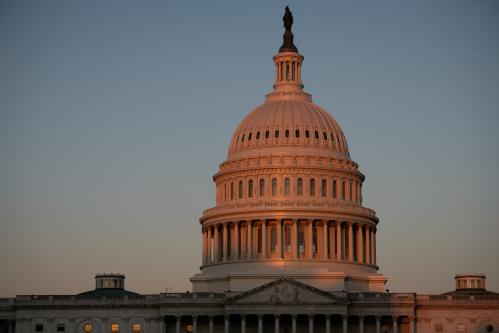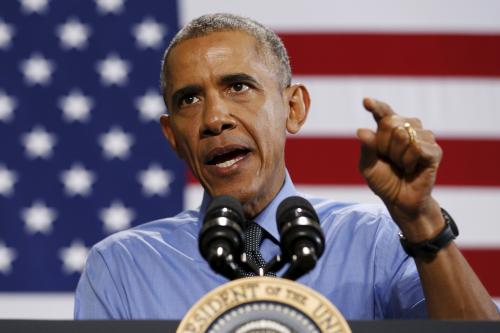Attention is justifiably focused on the presidential earthquake that has just shaken American politics, but as we try to discern how Republicans are likely to govern in 2017 it remains crucial to work through the implications of congressional change last night. The headline, of course, is that Republicans had a great night, riding Trump’s win to a surprising hold of almost all of the Senate seats they won in their wave election of 2010, a feat almost nobody thought they would accomplish and actually padding their majority in the House, where they will now control somewhere around 245 seats. (Throughout this post, we use preliminary figures that may well be subject to revision once final vote counts are tallied. Any changes will be marginal.)
First and perhaps foremost, the Freedom Caucus, which did so much to define the 114th Congress by pressuring John Boehner to resign his speakership. Going into the election, the caucus had 40 members, and 35 sought reelection in 2016. Thirty-four won reelection. The only loser was Scott Garrett in New Jersey’s 5th district. In the five districts where members retired, four new Republican members won their races (and in Louisiana’s 4th district, we will have to await a runoff, but the Republican is likely to win). They may well increase their numbers through recruitment of freshman members. But the hard-line, anti-leadership wing of the caucus seems less likely to hold Speaker Paul Ryan’s fate in its hands now that Ryan will be presiding over an increased majority. (Pro-Trump elements within the party may well decide that Ryan was insufficiently loyal to their champion in the final months of the campaign and oust him for that, but that would be an importantly different story from the Freedom Caucus being the driver of change. And perhaps some detente between the Freedom Caucus and Ryan is more likely.)
Next, what about the Main Street Partnership, a moderate Republican group emphasizing its commitment to small business, to which many observers will now turn as a potential buffer on some of Trump’s most populist instincts? It had 68 members in the 114th Congress, of whom 59 sought reelection. Of those, 56 won. The three losers all faced tough contests in competitive districts: Frank Guinta in New Hampshire’s 1st District (who lost to former Representative Carol Shea-Porter), David Jolly of Florida’s 13th District (who lost to former Governor Charlie Crist), and Robert Dold of Illinois’ 10th District (who lost to former U.S. Representative Brad Schneider). In the 9 districts where Main Street Republicans retired, eight of nine remain in Republican hands, with Nevada’s 3rd District (which looks to be going to Democrat Jacky Rosen) the lone exception.
Turning to Democrats, how has the election reshaped what will now be the out-party in both houses of Congress and the Oval Office? Democrats haven’t played this dissenter role since their big congressional wins in 2006 (followed by Obama’s triumphs in 2008 and 2012), and the members now part of their coalition have shifted. Notably, the Congressional Progressive Caucus, which had 59 members in 1997 and swelled to 78 in 2010, went into the election with 68 seats saw 62 of its members run for reelection. They held their ground (which is overwhelmingly blue—Obama carried their districts by an average of 44 percent in 2012): every single one won reelection, and Democrats also held the 6 districts where its members retired (or lost primaries, in the case of Corrine Brown and Chaka Fattah).
Finally, Blue Dog Democrats, the conservative-leaning group that once played a mighty role in the party but was largely wiped out by Republicans’ 2010 wave, are hanging on to life for now. The group had 14 members going into the election, and saw one retirement (Representative Gwen Graham of Florida’s 2nd District). Of the 13 members running for reelection, 12 won, with Representative Brad Ashford of Nebraska’s 2nd District the only apparent loser (his race was headed down to the wire).
In soon-to-come posts, we will examine other questions about how the shape of Congress has changed, including whether Republicans’ stances toward Trump affected their election results and how the geography of the two parties has changed.







Commentary
How key congressional caucuses fared in the 2016 House Election
November 9, 2016